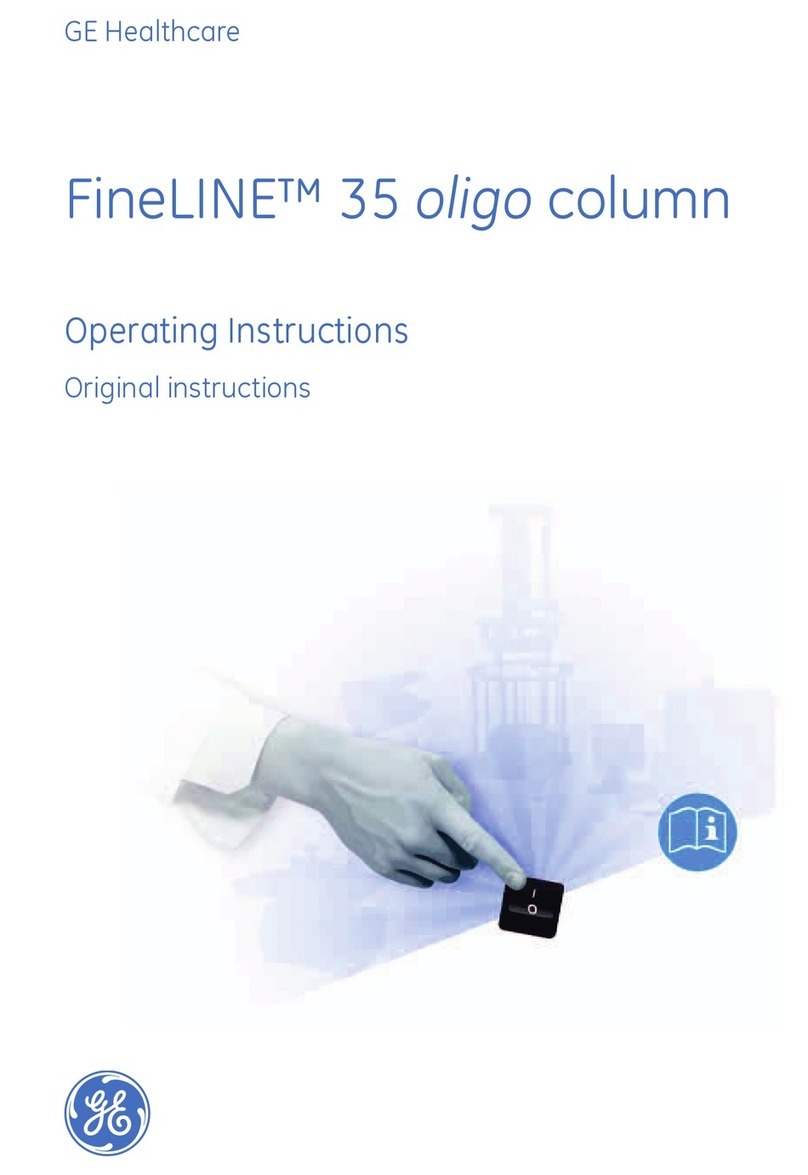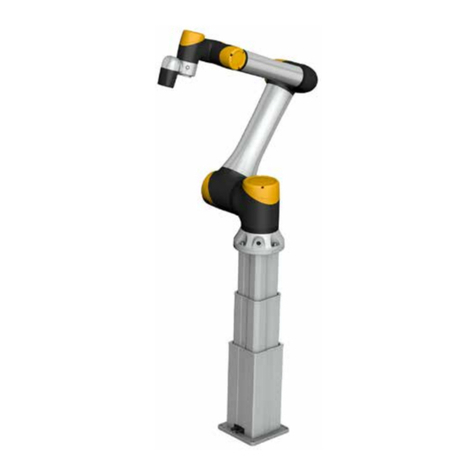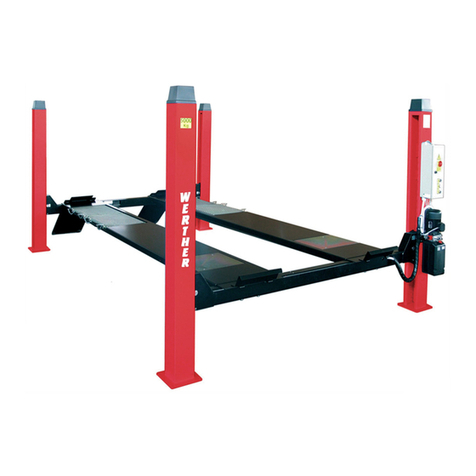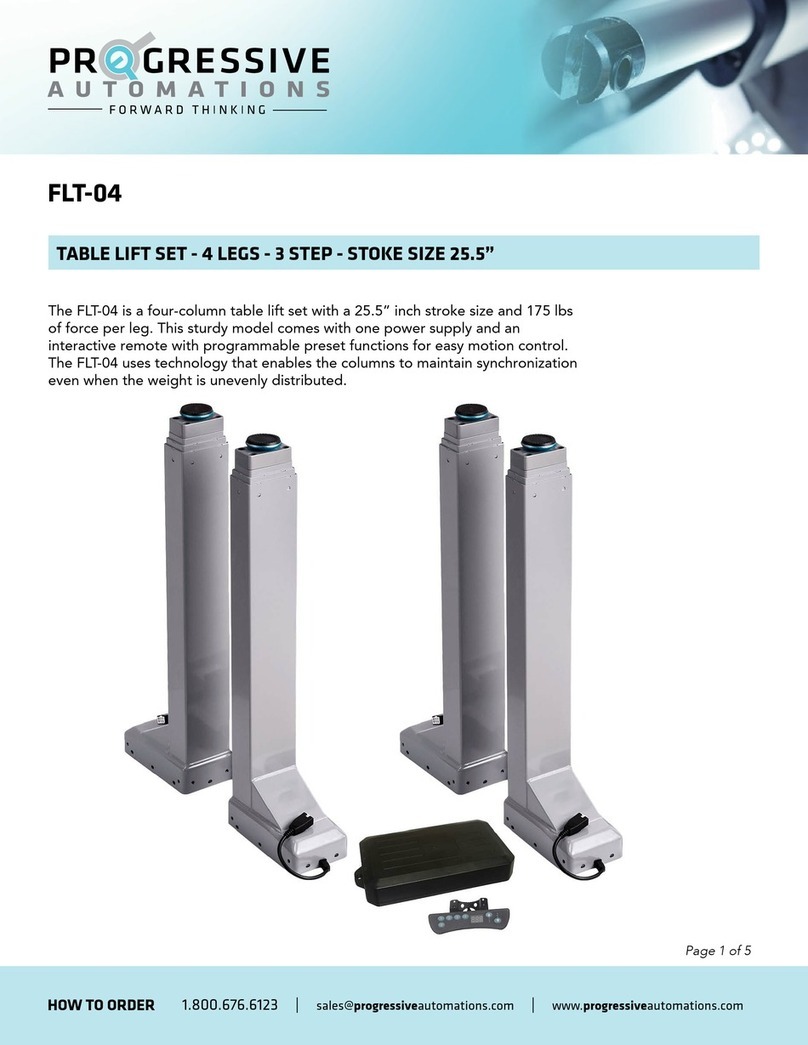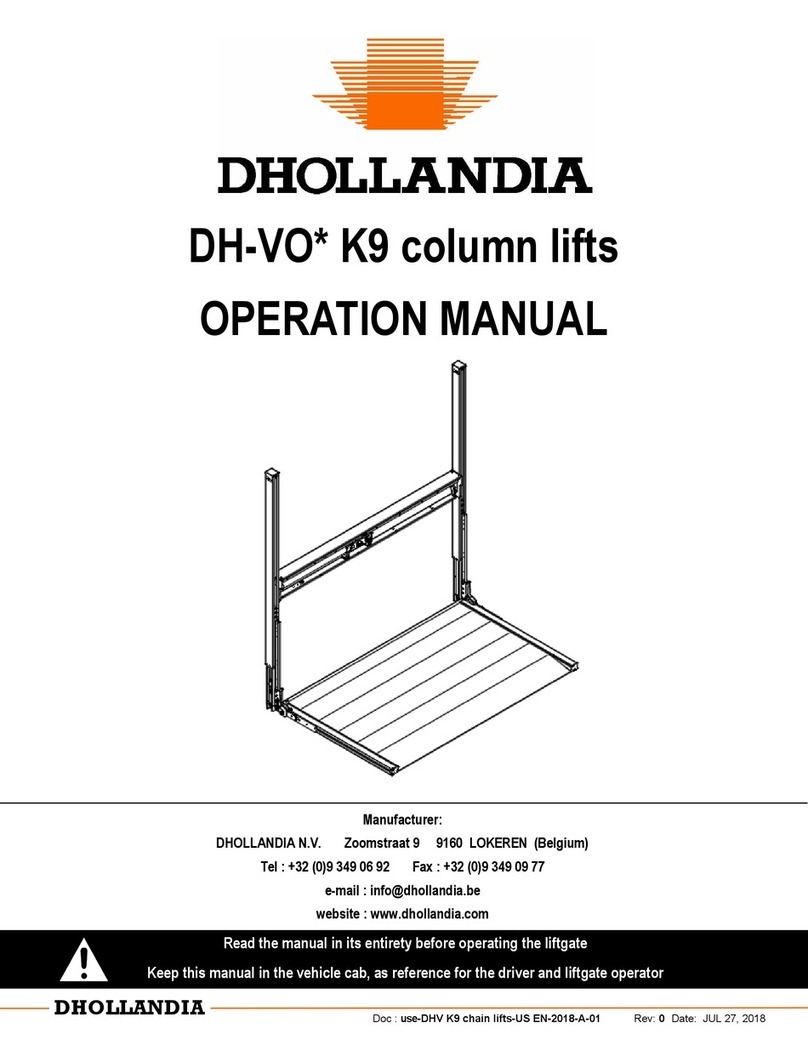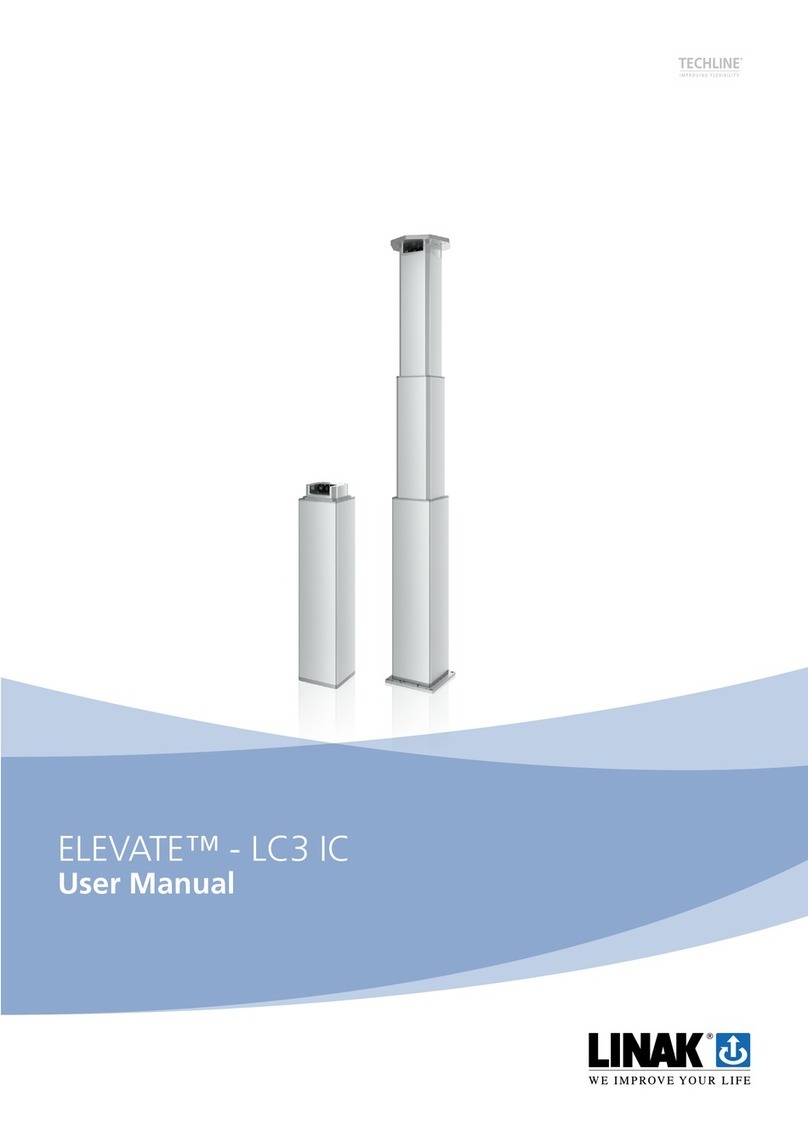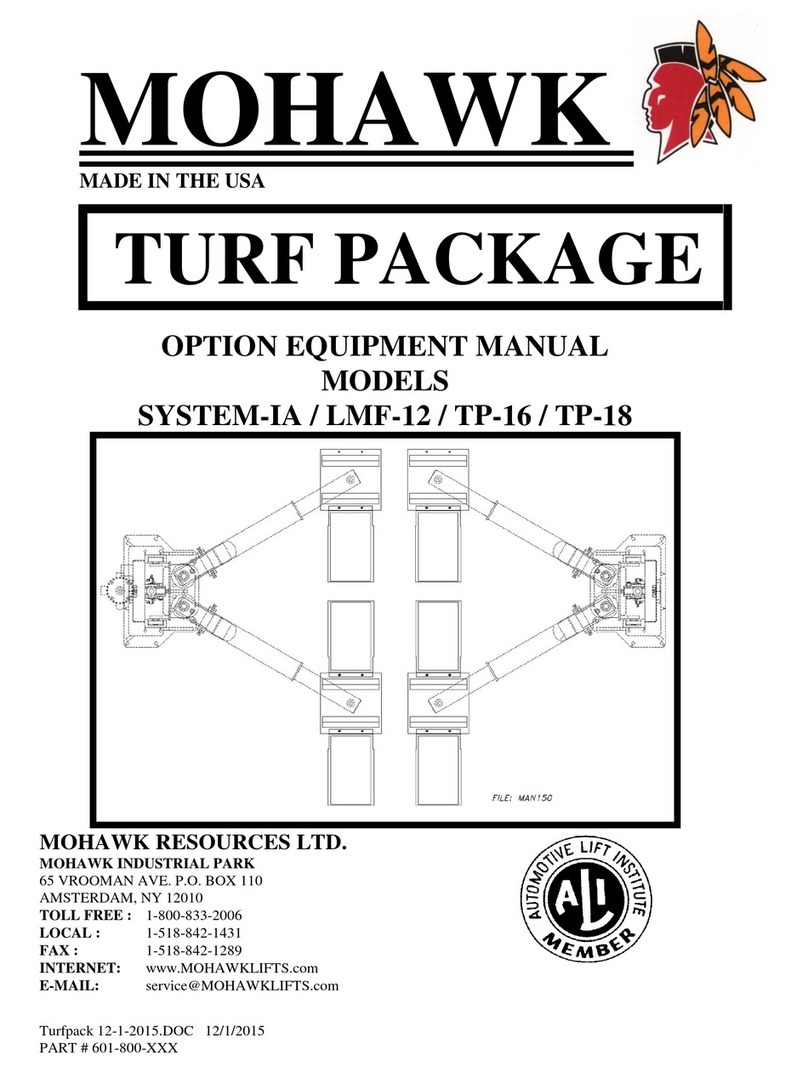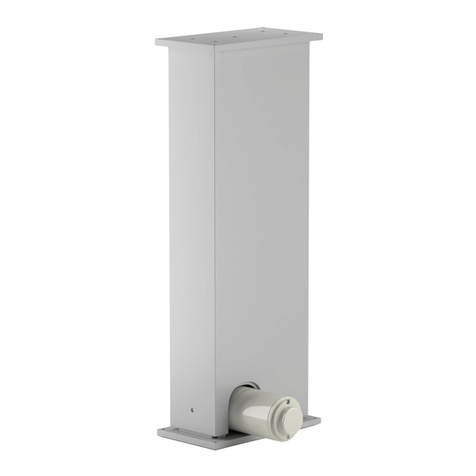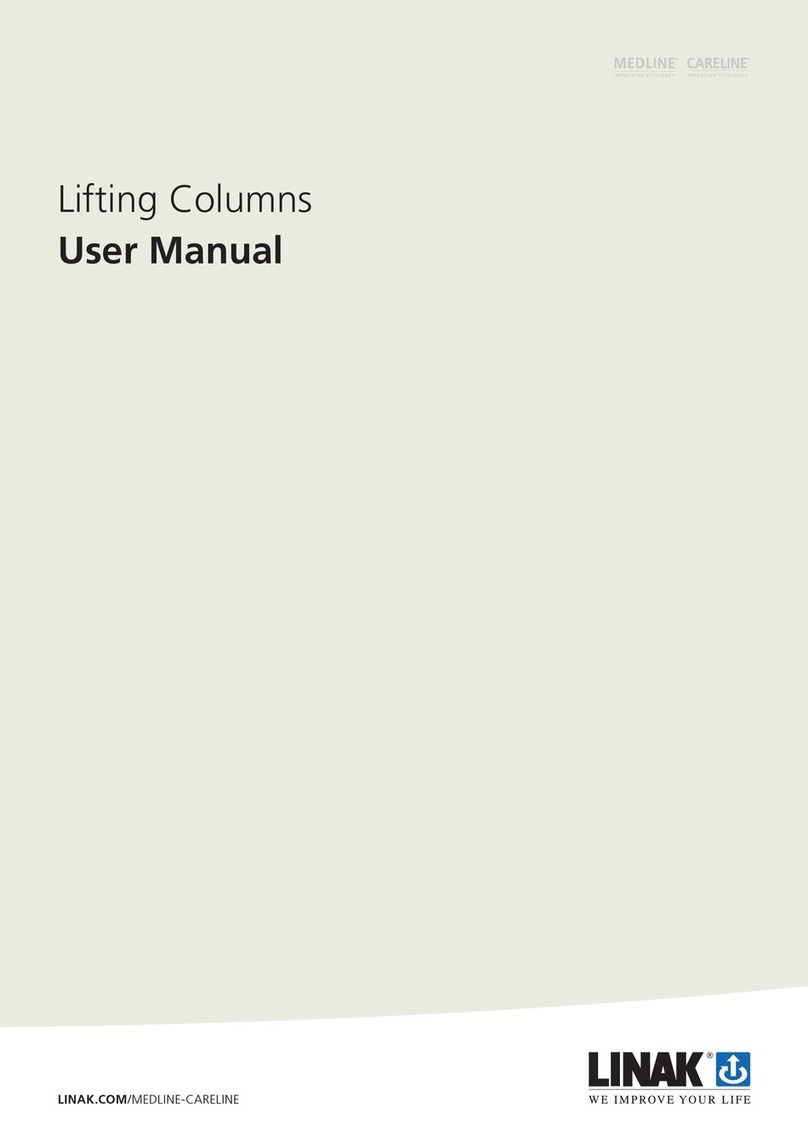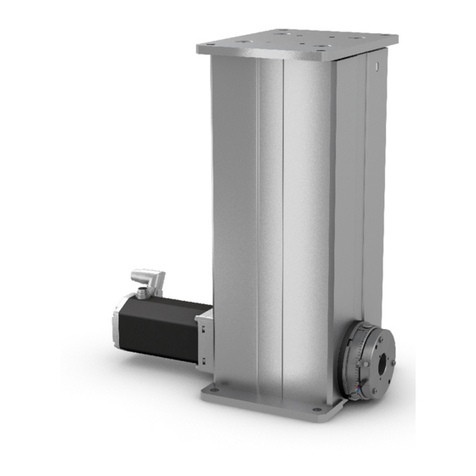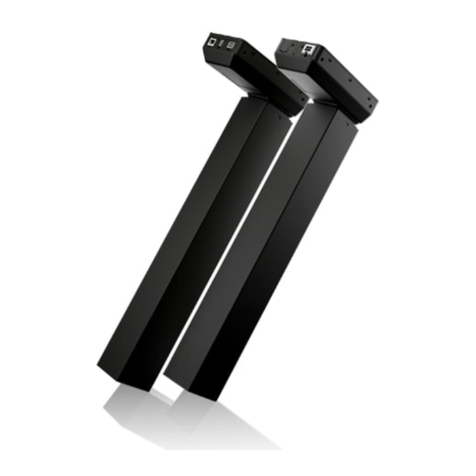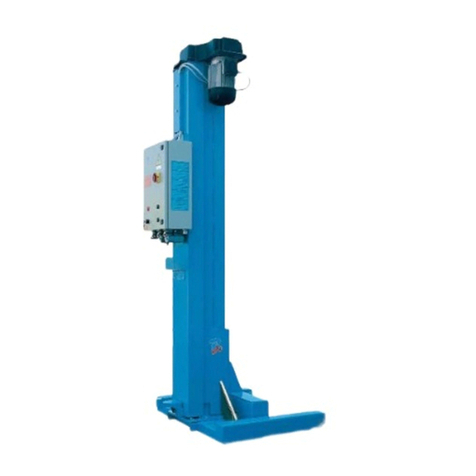
M1.1.HB240CF-HB240MCF.NLFREN - 05012018
3
NL
1 Belangrijke veiligheidsvoorschriften
1�1 Belangrijke opmerkingen
Tijdens de garantieperiode, wordt elk kwalitatief probleem worden opgelost ten genoegen van de klant. We aanvaarden
echter geen aansprakelijkheid in geval van problemen als gevolg van onjuiste installatie, niet toepasselijk gebruik van de
machine, overbelasting of installatie op een ongeschikte grond.
De hefbrug is speciaal ontworpen voor het opheffen van motorvoertuigen met een gewicht binnen haar uiterste hefvermogen.
Het gebruik van deze machine voor andere doeleinden is strengst verboden. Anders zullen we geen aansprakelijkheid
aanvaarden voor ongevallen of schade aan de hefbrug. Zorg ervoor, de labels op de machine in acht te nemen, die het
hefvermogen aangeven. Probeer nooit een te zwaar voertuig op te heffen.
Lees deze handleiding aandachtig voor gebruik, om economische verliezen of ongevallen door verkeerd gebruik te voorkomen.
Het is niet toegestaan de enige wijziging aan de besturingseenheid of aan mechanische onderdelen te brengen.
Voor de bescherming van het milieu, verwijder de gebruikte olie op een geschikte manier.
1.2 Kwalicatie van het personeel
• Alleen de gekwaliceerde en voldoende geschoolde personen mogen de hefbrug gebruiken.
• De elektrische aansluiting moet door een gekwaliceerde elektricien worden uitgevoerd.
• De onbevoegde mensen moeten buiten de werkruimte blijven.
1�3 Waarschuwingen
• Installeer de hefbrug niet op een geasfalteerde oppervlakte.
• Lees en begrijp de veiligheidsvoorschriften voor gebruik.
• Behalve op uitdrukkelijk verzoek van de klant, is de brug niet ontworpen voor gebruik buitenshuis.
• Houd uw handen en voeten ver van de bewegende delen. Houd uw voeten ver van de brug tijdens het dalen.
• Alleen de gekwaliceerde en voldoende geschoolde personen mogen de hefbrug gebruiken.
• Draag gepaste kleding, geen losse kleding, met stroken, dassen, enz. die in de bewegende onderdelen van de brug
kunnen worden getrokken.
• Om vermijdbare ongevallen te voorkomen, moet de ruimte rond de brug netjes zijn, zonder obstakels.
• De hefbrug is alleen ontworpen voor het opheffen van een geheel voertuig met een gewicht binnen haar hefvermogen.
• Maak altijd zeker dat de veiligheidspennen goed ingeschakeld zijn alvorens onder het voertuig te werken.
• Maak zeker dat de draagrubbers onder de door de fabrikant aanbevolen krikopnamepunten worden geplaatst. Tijdens het
opheffen moet de bediener zeker zijn dat het voertuig niet zal bewegen.
• Controleer de bewegende delen regelmatig op goede prestatie en synchronisatie. Zorg voor een regelmatig onderhoud, en
als er iets vreemds gebeurt, stop onmiddellijk met het gebruik van de hefbrug en neem contact op met de technischedienst
van uw verdeler.
• Wanneer het werk voltooid is, laat de hefbrug tot de laagste positie dalen en ontkoppel de hefbrug van de stroomtoevoer.
• Wijzig geen enkel onderdeel zonder de toestemming van de fabrikant.
• Indien de hefbrug niet wordt gebruikt voor een lange tijd, moet de gebruiker:
a. De stroomtoevoer ontkoppelen,
b. De olietank leegmaken,
c. Alle bewegende delen met hydraulische olie smeren.
1�4 Waarschuwingsbordje
Alle waarschuwingsbordje die op de machine aangeplakt zijn, dienen om de aandacht van de gebruiker te trekken op een
veilig gebruik van de hefbrug. De labels moeten schoon en leesbaar blijven, en worden vervangen indien versleten of niet meer
aanwezig. Lees de betekenis van de tekeningen op pagina 4 aandachtig en probeer deze te onthouden.
copyrighted document - all rights reserved by FBC

